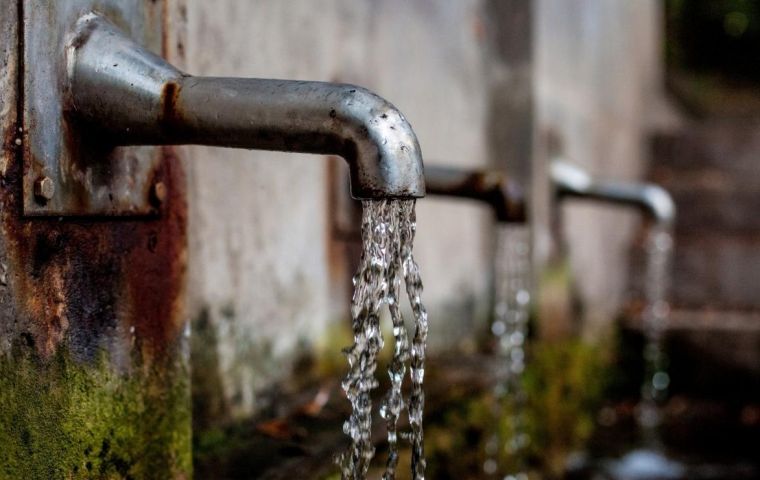MercoPress. South Atlantic News Agency
Rotating supply cuts launched as Bogotá's water reservoirs are running dry
 The situation is worse than expected after rainfalls forecasted for late March never arrived and are still awaited
The situation is worse than expected after rainfalls forecasted for late March never arrived and are still awaited Authorities in the capital of Colombia began rationing water on Thursday as local reservoirs were reported to be nearing alarming levels due to the El Niño phenomenon coupled with the aftermaths of global warming. It has not been ruled out that the severe drought might result as well in an energy crisis hitting some 10 million people who live in Bogotá and the surrounding areas.
In a move to minimize the impact of the latest measure, Bogota has been divided into 9 sectors, each suffering a 24-hour supply cut every 9 days starting at 8 am, it was explained.
Bogota Mayor Carlos Galan warned that water rationing could last up to a year. “I do not know if the year, but yes this is going to last. The goal is to have in December 2024 75% of the level of the reservoirs,” he said in a radio interview. “Restrictions are needed in these first weeks and months,” he added.
“There is a severe drought caused by the El Niño phenomenon, which is reinforced by climate change. The lack of rain has been going on for several months,” former Colombian Environment Minister Manuel Rodríguez Becerra told TN.
The rationing will be in force indefinitely but interruptions could be more severe in the future, the local Empresa de Acueducto y Alcantarillado de Bogotá (EAAB) pointed out after the situation was deemed critical in the Chingaza system, which supplies between 70% and 80% of Bogotá's water.
“There are not only water shortages in Bogota, but in nearly 300 municipalities across the country. In the capital, the El Niño phenomenon that causes drought is reinforced by climate change. The lack of rain has been going on for several months,” Rodríguez Becerra also noted.
The government has also launched an awareness campaign to reduce water consumption, with a focus on people washing their cars and other forms of misuse of drinking water. Residents were also advised to cut down their shower time by half.
According to the EAAB, 58% of Bogotá's water is spent on personal hygiene. An average family is said to consume 6,910 liters of water monthly in showering, brushing their teeth, or shaving.
The situation is worse than expected after rainfalls forecasted for late March never arrived and are still awaited.
“Today there are problems with reservoirs on which hydroelectric plants depend. Seventy percent of the country's energy is produced by hydroelectric plants. At this moment, there is concern for several of them and there are those who warn that it could also be necessary to initiate an electric rationing”, said Rodríguez Becerra, who insisted that supply cuts “should have started two months ago.”
He also pointed out that Colombia was highly vulnerable to climate change and ranked eighth “among the economies most threatened” by global warming.




Top Comments
Disclaimer & comment rulesCommenting for this story is now closed.
If you have a Facebook account, become a fan and comment on our Facebook Page!